Automatic language translation
Our website uses an automatic service to translate our content into different languages. These translations should be used as a guide only. See our Accessibility page for further information.

Domestic violence is a serious problem which impacts many NSW families. In 2021-22 an estimated 1.5 per cent of Australian women aged 18 years and over experienced violence by an intimate partner in the past 12 months. It is estimated that 1 in 4 women (27%), and 1 in 8 men (12%) in Australia experienced violence by an intimate partner or family member since the age of 15 years (ABS Personal Safety Survey 2021-22).
Routinely collected administrative data offer a consistent time series to track and monitor changes in the incidence of domestic and family violence recorded by police. In NSW, incidents are recorded by the NSW Police and are flagged to indicate if the parties involved in the incident include persons in a domestic relationship, including current and ex intimate partners, family members and other domestic relationships such as household members and carers.
The chart below shows the number and rate of domestic violence related assaults recorded by the NSW Police.

Read the comprehensive quarterly domestic and family violence report: Trends in domestic and family violence - June 2025 (PDF, 419.4 KB)
The chart below shows the number of domestic violence related murders recorded by the NSW Police.

Infographic: Domestic violence related murder in NSW (PDF, 293.8 KB)
Dashboard: Murder victim trends in NSW
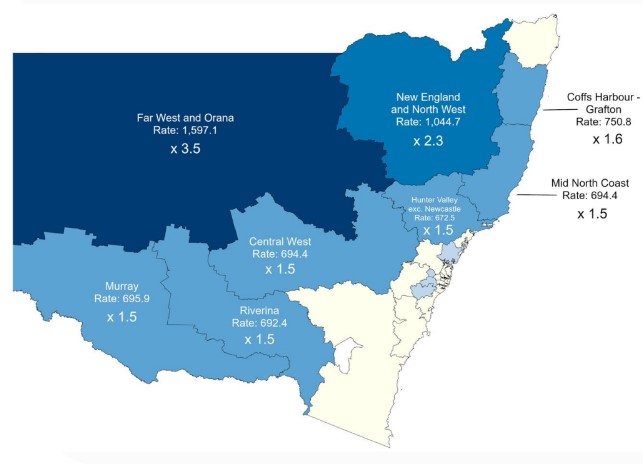
Rates of domestic violence related assault vary across NSW with higher per capita rates in remote and regional areas.
Data file: Domestic Violence Assault Regional Comparison tool (XLSM 238.7 KB)
This tool provides information on domestic violence assault incidents reported to, or detected by, the NSW Police. It contains regional data for NSW, Greater Sydney, Regional NSW, Statistical Areas and Local Government Areas, for the past five years
Measuring trends in domestic and family violence (DFV) is important but challenging. While police data is easily accessible, it may not fully represent DFV trends in the community due to low and variable reporting rates. Trends in five alternative metrics offer a more reliable indication of trends in DFV over time -Domestic and family violence community trend measures

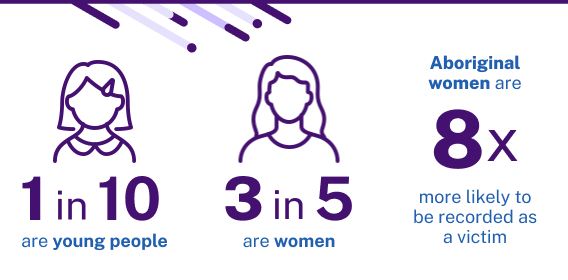
Data recorded by the NSW Police in 2023 shows that 1 in 10 victims of domestic assault are young people, 3 in 5 are women and Aboriginal women are 8 times more likely to be recorded as a victim.
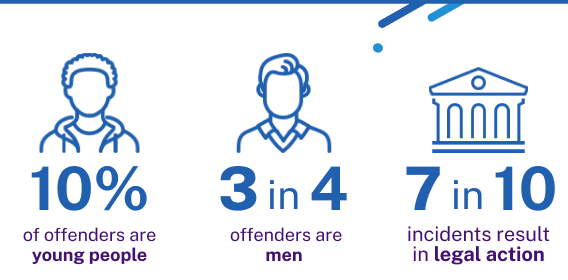
Data recorded by the NSW Police in 2023 shows that 1 in 10 domestic assault offenders are young people, three quarters of offenders are men and 7 in 10 incidents of domestic assault results in legal action.
Access the data: Domestic violence statistics (XLSX, 109.5 KB)
This includes information about victims and perpetrators involved in domestic violence incidents, including their gender, age, Aboriginality and victim-offender relationship
The Criminal Justice System can respond to domestic violence in various ways, including prosecuting offenders in court and issusing Apprehended Violence Orders (AVOs).
The Criminal Justice System addresses domestic violence through various measures, including the use of Apprehended Violence Orders (AVOs).
The chart on the tight shows the number of Apprehended Domestic Violence Order (ADVO) in force each quarter, plus the proportion that were breached.
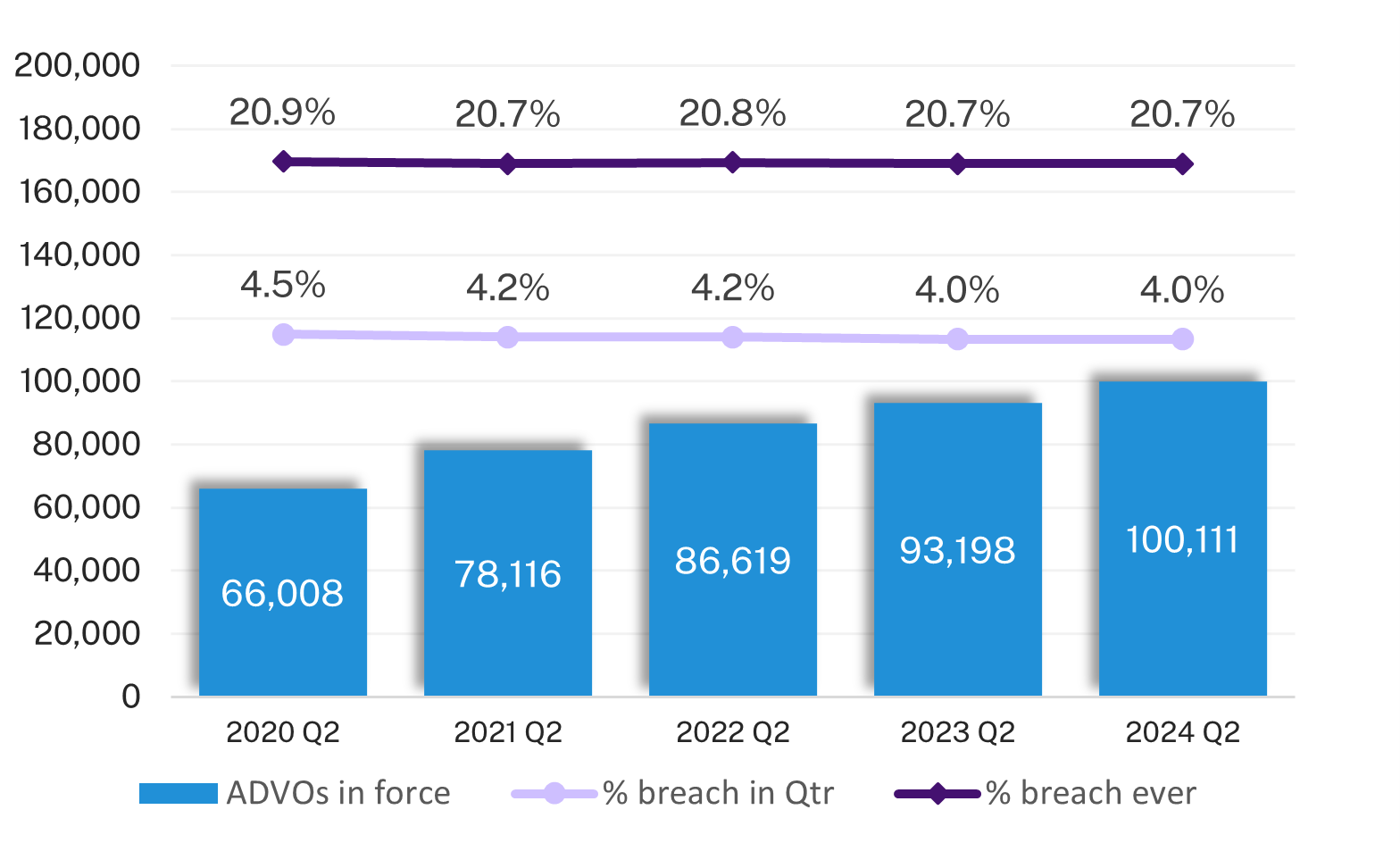
Access the data: Apprehended Violence Orders statistics (XLSX, 797.5 KB)
A new offence of coercive control began in NSW on 1 July 2024, targeting abusive behaviour used to control a current or former intimate partner.
The chart below shows the types of controlling behaviours recorded by NSW Police from July 2024 to June 2025.
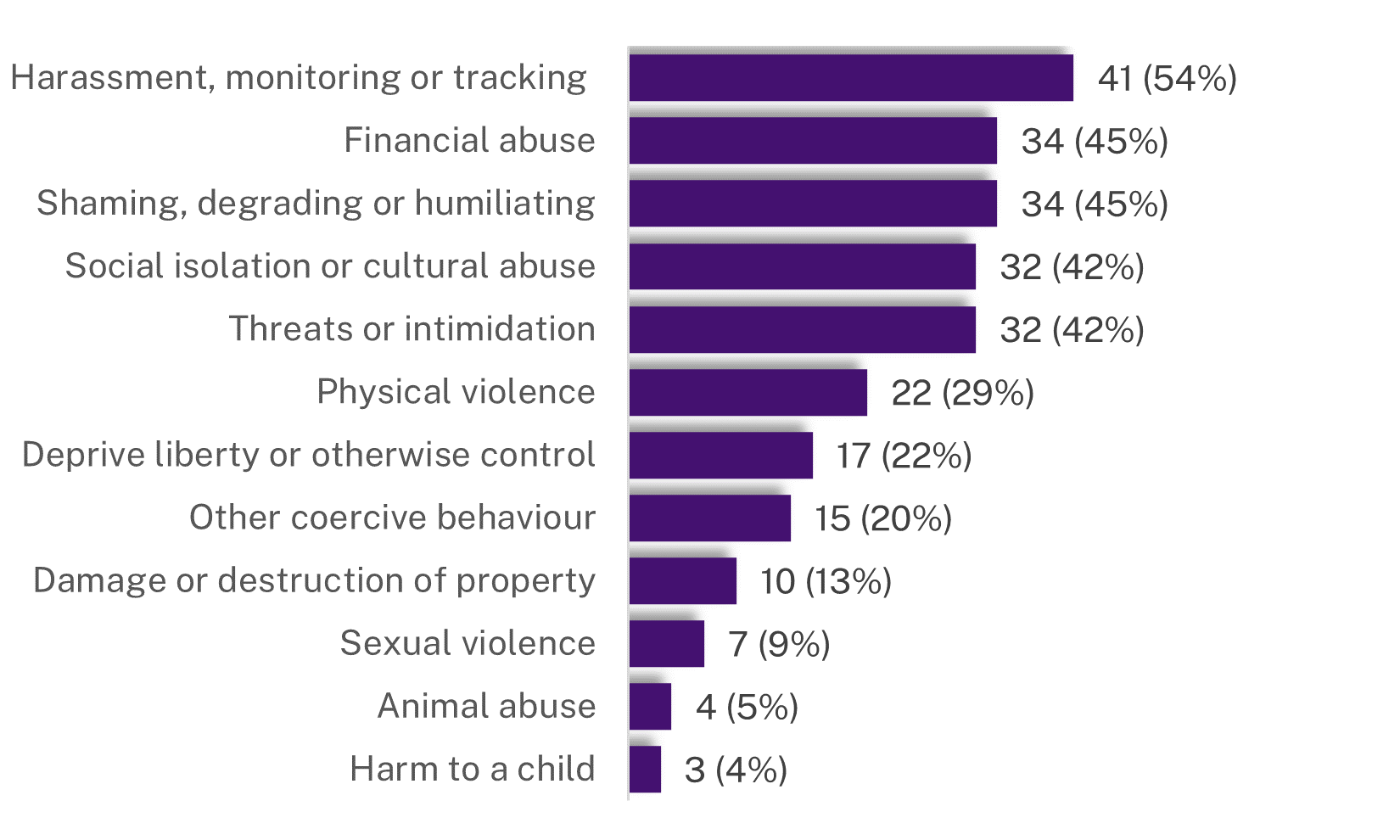
Read the full report: Coercive control monitoring report June 2025 (PDF, 287.3 KB)
The infographic shows the number of domestic violence assault offences at various stages of the criminal justice process, from the initial police report to final sentencing.

Read the full report: Attrition of domestic assaults from the New South Wales criminal justice system
Infographic: Domestic violence: Court processes and outcomes in the NSW Criminal Justice System (PDF, 125.1 KB)
Last updated: